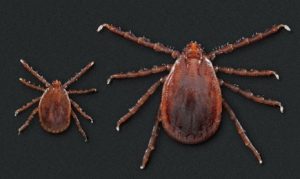WILMINGTON – Gov. John Carney signed a bill Tuesday that will clarify and enforce workplace fraud rules and create a new registry to oversee contractor activity in the First State.
Senate Substitute 1 for Senate Bill 95 passed the Delaware General Assembly earlier this year with nearly unanimous support and incorporates recommendations from a 2018 review of workplace fraud enforcement.
“Ensuring that the Department of Labor has the tools and resources it needs to enforce employment laws in Delaware is crucial to maintaining a fair economy,” said Sen. Jack Walsh, D-Stanton, prime sponsor of the bill. “Specifically, this bill addresses the underhanded, anti-worker, race-to-the-bottom tactics that we’ve seen from some of the more unscrupulous contractors out there. By barring unfair and illegal practices at the entrance to the marketplace and strengthening back-end enforcement, we can make contractor work in Delaware better for employers, employees, and customers all in one go. That’s a massive accomplishment and I am thankful to the many people who helped us get this bill to a signing ceremony today.”
Advocates inside and outside of Legislative Hall who pushed for the bill complained that some contractors in Delaware had long used a controversial method of employee misclassification to undercut competitors. In most cases, that meant hiring employees but listing them as independent contractors – workers who should be completely independent – to avoid paying for worker’s comp, unemployment, and other benefits owed to traditional employees.
The most significant change under the new law seeks to address misclassification and other types of workplace fraud by establishing a new Delaware Contractor Registration Act. This new way of tracking contractor activity will do all of the following:
1. Require contractors to pay a small annual fee and apply for a certificate of registration to engage in construction activities in Delaware.
2. Requires registered contractors to establish compliance with State labor and revenue laws.
3. Requires that all contractors who work on a public works contract comply with the new contractor registration requirement.
“This is important legislation that places the focus of the DOL and our work place fraud act on protecting the rights of workers and discouraging unscrupulous companies that, through deflated labor costs, unfairly compete with law abiding companies,” said Sen. Anthony Delcollo, R-Elsmere, who co-sponsored the bill in the Senate. “I am proud to have contributed to a bi-partisan solution that brought together labor, business owners, and many others in improving the system for businesses and workers alike.”
The bill signed into law by Gov. Carney on Tuesday differed from the original SB 95 in a few key ways, a product of the many negotiations that took place before the final floor votes. In addition to a handful of minor changes, Senate Substitute 1 lowered registration fees for contractors that do not hold public works contracts, established a right to request a hearing for contractors targeted by the DOL for violating the law, and required contractors to disclose if anyone involved or invested in the company has been convicted of fraud or other prohibited trade practices in the past.
Labor Secretary Cerron Cade worked closely with legislators leading up to the vote and hailed it as an important step forward for Delaware’s laborers.
“The Contractor Registration Act of 2019 reforms Delaware’s construction industry by disincentivizing fraudulent business practices and protecting the rights of workers,” said Sec. Cade. “The Department of Labor looks forward to working together with leaders of labor and industry to ensure successful implementation of this vital new law.”
Supporters and labor advocates – some from opposing sides of past debates on labor law – say that eliminating corner-cutting will benefit the contractors who follow the rules.
‘Today, another signing of a great piece of legislation long overdue in Delaware,” said Delaware State AFL-CIO President James Maravelias. “Going forward, unscrupulous contractors will no longer make Delaware their safe haven to operate in.”
The new law will go into effect on October 1, 2020, giving time for DOL to craft and execute a statewide information campaign for Delaware businesses.
